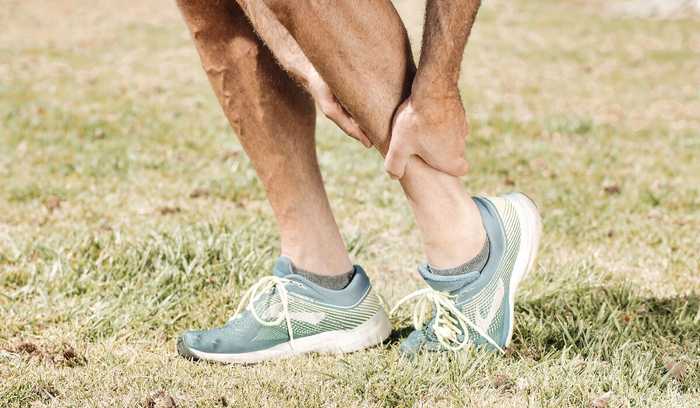Avoiding Injuries as a Marathon Runner

Contents
You’ve trained hard to prepare for the marathon; you’ve considered the three fundamentals every recreational runner can do to avoid common running injuries.
With race day on the horizon you’re about to encounter another set of challenges that could increase your risk of injury. Here’s what you can be doing in the build up and during running a marathon to prevent your marathon experience from being marred by injury.
Pre-race
The amount of training has been covered in depth in our ‘Training for a marathon as a beginner’ article. Liberal estimates of marathon training times range from 6-weeks to the more conservative 16-weeks. Your current fitness levels and experience running are factors to consider when setting the right training schedule for you.
Whatever your schedule, from these early days, your recovery should be a top priority within your training plans. Forming and adapting habits of recovery after every training run is key to getting this right. A runner with strong recovery habits is a runner more likely to hit personal marathon goals without suffering during and after it.
There are a number of recovery habits you can begin to apply when training for a marathon.
Change into warm clothing
Your body’s immunity will be tested the more frequent and longer you go running. As the marathon training schedule dials up the miles, so too does the risk of you getting sick. This is because the body’s immune system can be shocked when it cools down too quickly.
A simple thing you can do straight away to counter this is to change into warm clothing immediately after the run. Runner’s World has written a great article that breaks down the type of clothing suitable for a runner in varying cold to mild temperatures.
Drink fluids
The exertion of running releases energy and water. To keep a good balance and avoid dehydration you need to begin putting back in what you’ve lost after a run. The volume that the body can handle is around 500ml per hour. Size wise this is like drinking a pint… of water. Consuming something a little sweeter with electrolytes in it can also help replenish salts and sugars, but we advise sticking to the water.
Stretch out the muscles
Stretching before and after a run is essential for preparing the body to run and to prevent common running injuries. On marathon day you can expect discomfort in the form of cramps, blisters and dehydration. If you’re unlucky you might sprain the ankle or pull a hamstring. Stretching is a precautionary action to lessen the likelihood of sprains and pulls.
Use stretches like the ankle rotation – clockwise and anti-clockwise – to strengthen the ankle muscles and help prevent an ankle roll. Foam rollers used to roll down the backs of legs and over quads are an easy way to stretch the hamstrings that are engaged during running.
For injuries that persist or prevent you from running, it is strongly advised that you seek the advice of a professional like a sports physiotherapist.
Eat nourishing foods
In tandem with regularly drinking the right fluids your body is going to need a replenishment of the right calorific food. The average marathon runner will burn 2,600 calories. In the build up to the big event you will be clocking and potentially exceeding 40-miles of running a week.
If you need some inspiration to set the right marathon training food plan check our schedule out. You will notice that as the training increases so does the food intake, in particular the carbohydrate, protein and vitamin consumption.
Eating poorly – regular takeaways! – can slow-down the impact of your training and prolong the process towards marathon success. The day before (and up to 5-days in advance) will involve a lot of what runners passionately call carb loading.
Essentially, by eating more carby foods like pasta, potatoes and rice, you will begin to fill up the glycogen stores in the body. These stores are the energy back ups that are going to help you achieve a marathon distance by running for an average of 4-hours or more.
Foam rollers may feel a little luxurious and meal plans a little too organised but these habits are a measured way to look after yourself. You’ve signed up for one of the toughest events a runner can do. Now is the time to get into new habits to help prevent picking up an injury while training for a marathon.
During
The pistol fires and you’re off, one of many, all running towards the goal of marathon completion. In the first couple of miles it’s common to get lost in the atmosphere and the spectacle of the event. Your senses are firing and your mind will be racing going through all the visualisation exercises of running a successful marathon.
Replace Lost Glucose and Water
Around the halfway marker, your body’s glucose levels become depleted and you switch over to those carby glycogen stores. In parallel the same is happening with water levels. You are exhausting what you’ve built up ready for the race. At this point you need to begin replacing the water and glucose at the aid stations, particularly in the final third of the marathon.
It is crucial to start consuming small bites of food – fruit, chocolate or even gels – and bottles of water early rather than later on in the race. Try and pace yourself without needing to cram it in.
Potassium (found in bananas especially) is effective at not only giving you some much needed glucose, they also help to transport fluid efficiently around the body, keeping hydration levels high and helping fend off cramps. Symptoms like the old wobbly leg are signs you might need to eat a banana.
Take Care of Any Chaf
We’ve already mentioned those uncomfortable race day injuries – cramps and blisters – that can be dealt with on race day. Another classic marathon ailment is chafing – the repetitive rubbing of material on skin resulting in sores – that is the bane of many a long-distance runner.
A good hydrating mosturiser can be super helpful after a run.
By carrying plasters, bandages and Vaseline you can take care of these minor discomforts if and when they arise on race day. Trust us your future self will thank you. The same self that once they’ve achieved marathon success should turn their attention to ‘How to recover after a marathon’.
Conclusion
How to avoid picking up marathon related running injuries have taken into account the two crucial periods of running a marathon – build up and the actual event itself!
Your pre-race preparation needs to consider what running gear you’re wearing; what food and drink you’re consuming; and what stretches you are using to condition the body.
During the marathon itself the focus moves from preparation to maintenance. How do you replace lost fluids and glucose; how to tend to minor injuries like sores and blisters that are bound to arise over 26.2 miles.


